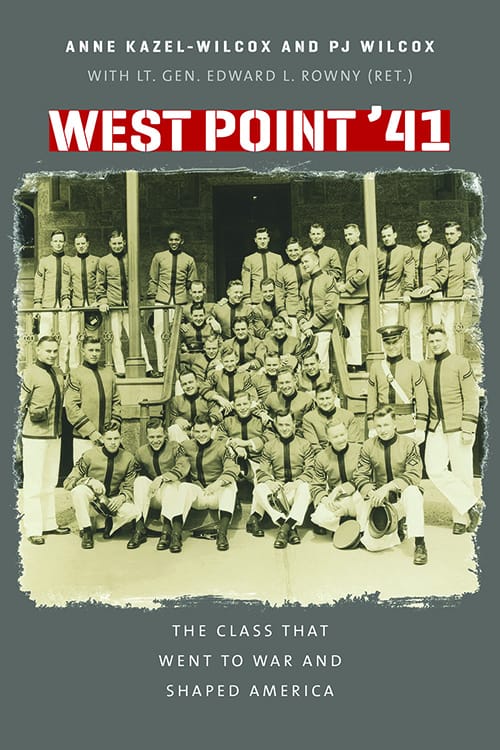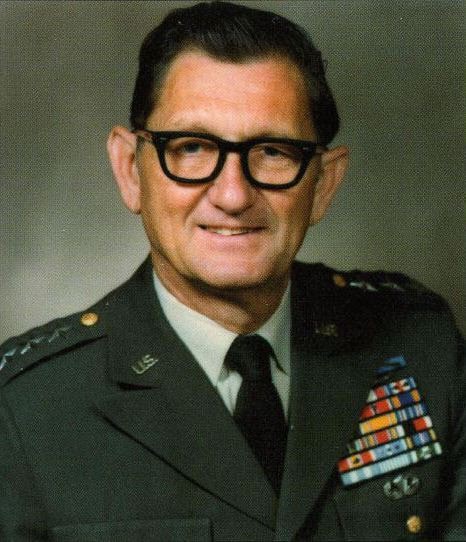
Edward Rowny was a 19-year-old student at Johns Hopkins when he traveled abroad for a semester at Jagiellonian University in Krakow, Poland. He’d been awarded a scholarship by the Kosciuszko Foundation, named after a Polish-born general of the American Revolution who later went on to design and build the military academy at West Point. One day, Rowny spent his small food allowance on entry into the Berlin 1936 Olympics. He watched Jesse Owens win the hundred-meter race — and Hitler turn his back on the great black athlete. Rowny’s fury turned to spine-tingling fear as Hitler’s storm troopers then took to the field in terrifying might, thousands of them with torchlights, chanting martial songs to their Nazi leader. Right then, Edward Rowny swore to himself that he better get well prepared for war. He entered the United States Military Academy at West Point the following year.
Lt. Gen. (ret.) Rowny recalls these incidents in West Point ’41: The Class That Went To War and Shaped America. Rowny was among 424 officers to graduate from West Point in 1941, and like so many of them, was catapulted into World War II and early commands. Rowny led combat engineers and infantry of the 92nd “Buffalo” Division in the icy Apennine Mountains of Italy. He later went on to command in the Korean War, introduced the concept of armed helicopters to combat in Vietnam, and went on to advise five presidents including serving as Chief Negotiator for nuclear disarmament with the Soviets under President Reagan. Not bad for the son of Polish immigrants from Nagoszewo, northeast of Warsaw.
West Point ’41: The Class That Went To War and Shaped America was written by Anne Kazel-Wilcox and PJ Wilcox together with surviving classmates of the West Point ’41 class with Gen. Rowny at the helm of their collaborative effort. The book is the inspiring true story of ordinary young men in extraordinary times — young men who came from all walks of life in America and proceeded to blaze trails of leadership that helped shape the course of America’s future. The book’s early chapters include classmates battling on Bataan — including Lt. Alexander Nininger who was awarded the first Medal of Honor of WWII — and in North Africa, on Omaha Beach, in Holland, the Battle of the Bulge, and more. These officers struggled with the fog and terror of war, losing 10 percent of their class to WWII.
Subsequent chapters follow officers into a postwar era of unprecedented military latitude during which they helped shape defense strategy; led development of America’s rocket programs; directed space missions; and were “sneaking and peeking” in Cold War hot spots. Spicing up the latter are colorful scenes in East Berlin where a ’41 officer, Col. Paul Skowronek, served as chief of the US Military Liaison Mission. Skowronek brought in a gold Corvette to serve as his official vehicle because it could outpace the BMWs of the East German secret police (Stasi) chasing him. This West Point ’41 class was both bold and imaginative.
The book is sprinkled with poignancy, humor and also hones in on the innovation of class members; they had been urged in cadet days at West Point to “go out and do something, do anything, but do it.” Many of them continue to display unwavering duty and determination to this day. Col. Skowronek recently turned 99, and Gen. Rowny, who turns 98 this spring, chairs the American Polish Advisory Council (APAC), which recently held its annual symposium at Yale University.
For more on the book, see Amazon: http://www.amazon.com/West-Point-41-Shaped-America/dp/1611684692
(AM)





